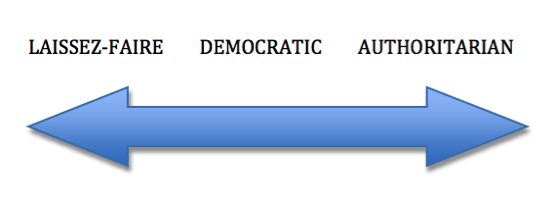Leadership refers to an inter-personal process under which an executive can guide, direct as well as influence the behaviour of his subordinates towards the accomplishment of certain goals in a specific situation. Modern day businesses recognize leadership as an essential quality of all managers. This can help them in boosting up the zeal and confidence of other employees. Today we are going to discuss in brief about the concept of Leadership Continuum.
Suggested Videos
Leadership Continuum by Tannenbaum and Schmidt
Tannenbaum and Schmidt initially proposed it in 1958 and updated it in the year 1973.
This concept highlights the diverse range of various leadership styles. The action range draws direct inspiration from the degree of authority exercised by the manager.
Such a leader considers the level of freedom of workers engaged at non-managerial levels while taking a decision. Amongst the two extremes of free reign and autocratic, various leadership styles have been illustrated on the leadership continuum.
The right side of the leadership continuum hints at release of control by the manager. The left side, on the other hand, shows a stringent levy of control.
However, none of the two extremes be it absolute freedom or authority can be helpful for the organization. It is thus necessary to strike the right chord of harmony between both for benefitting out of the same.

A manager gets characterized by the degree of control exercised by him. This can be further segregated into the following seven possibilities:
Seven Forms Of Leadership According To The Level Of Control Exercised
- An autocratic form of leadership wherein the manager takes the decision. Consequently, he announces the same to his subordinates for implementation.
- The manager takes the decision and explains its benefits to his subordinates for acceptance.
- The manager presents his ideas amongst his employees for further questioning and analysis. This, in turn, encourages the involvement of subordinates.
- This is similar to the model described above. However, the only difference lies in the fact that the ultimate decision of the manager might get modified after accounting for the thoughts and views of his subordinates.
- A manager asks the group to take the decision after properly defining their limits.
- The last style invites full participation of subordinates who can decide and act freely under the overall limits set by the manager.
As per leadership continuum, it is necessary to consider the requirements of a specific situation while deciding the ultimate style.
Factors a Manager Should Consider While Taking His Pick
- The forces in subordinates – Tolerance level of subordinates to ambiguity, their need for independence, understanding of the problems, interest in solving the same, willingness to take responsibility for decision making, identifying and understanding the organizational goals as well as expectation kept from the leaders.
- Forces in the manager – This comprises of the manager’s value system, the confidence level in subordinates, tolerance of ambiguity and leadership inclinations.
- The forces in the situation – General and environmental situations like the nature of organizational problems, type of organization, time pressure, group effectiveness etc.
Tannenbaum and Schmidt concluded their theory of leadership continuum by stating that leaders shape their behaviour after analyzing the organizational metrics, themselves, their subordinates and other environmental factors. The duo updated their work in 1973 by suggesting a new continuum of patterns.
Questions on Leadership Continuum
- For the main styles of leadership identified in the Leadership Continuum is ______.
Ans. Tells, sells, consults and joins
- _____ factors influence the choice of leadership undertaken by the manager.
Ans. Three






Motivation is required in every case of life. Without motivation, we can not do any work properly. Education, career, business, goals are the need of motivation in each case. As a result, we can move on to success.
I got the answers to all my questions after reading your content. Thanks a lot for sharing this content.